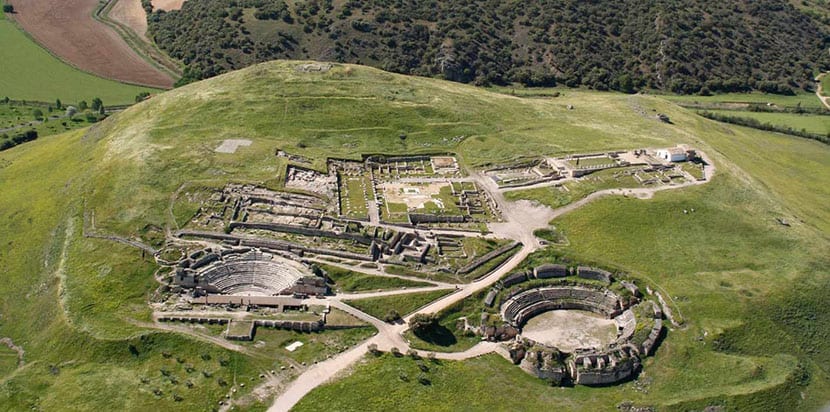
Spain It is a land with thousands of years of history and that is why it has many ancient sites that are interesting for lovers of history and archeology. For example, in the province of Cuenca there is the Archaeological Park of Segóbriga.
It is a set of ruins that have survived the passage of time quite well and that have allowed specialists to know the day-to-day life of the ancient Celtic and Roman communities of the area. We invite you to take a virtual tour of the park, hoping that it makes you want to take a little trip to get to know it.
segobriga

The archaeological ruins they are in Saelices, a municipality of Cuenca in the community of Castilla la Mancha. Its discovery dates back to the end of the XNUMXth century when a collective tomb dating from the XNUMXnd century BC was found, which was assigned to a Celtiberian group from the Bronze Age. The tomb was carved out of limestone and archaeologists assume that it belonged to a Celtiberian fort.
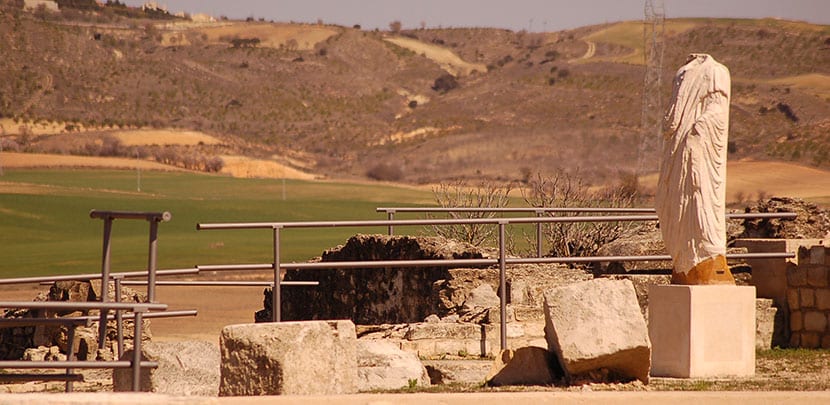
Other documents support the idea that the first Segóbriga, that of Celtiberia, was followed by the Roman Segóbriga after the Wars of Sertorio. Plinio also contributes his own by naming Segóbriga as the head of Celtiberiae, an area that in those years reached Clunia and which paid tribute to the Legal Convent of Caesar Augusta.
Under the Romans Segóbriga was very important in the territory to the point that in the time of Augustus it ceased to be tributary and became a municipiumIn other words, a city ruled by Romans, which in the end earned it the construction of better buildings and infrastructure, including the wall, the amphitheater and the theater whose ruins we see today.
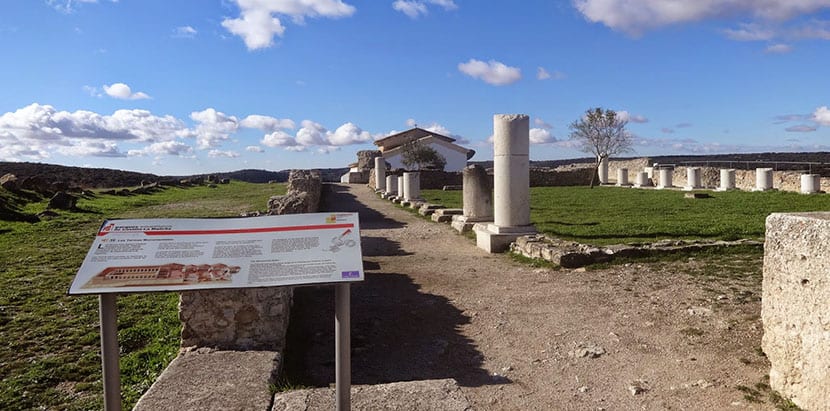
After the fall of Rome it continued to be important but it seems that depopulation began with the Muslim invasion since the elites decided to flee north. After the reconquest, the area was repopulated in other places and the ruins were gradually forgotten. The ancient and important city disappeared in the twilight.
Visit the Segóbriga Archaeological Park
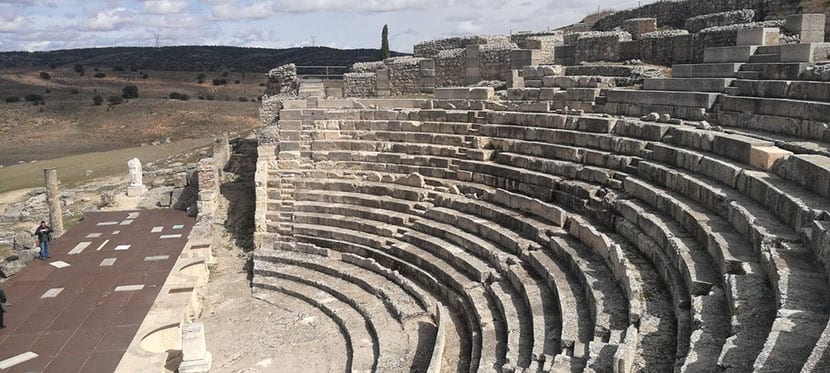
If you are by car you can access from the Carrascosa del Campo road to Villamayor de Santiago, in Saelices. The park is open Tuesday through Sunday from 10 am to 6 pm although the last access is allowed at 5 pm. In summer it opens from 10 am to 3 pm and from 4 to 7:30 pm. The entrance costs 6 euros but if you are a student 2, 50 euros and if you are retired or unemployed you only pay 1 euro. children under six are free. Credit cards are accepted.
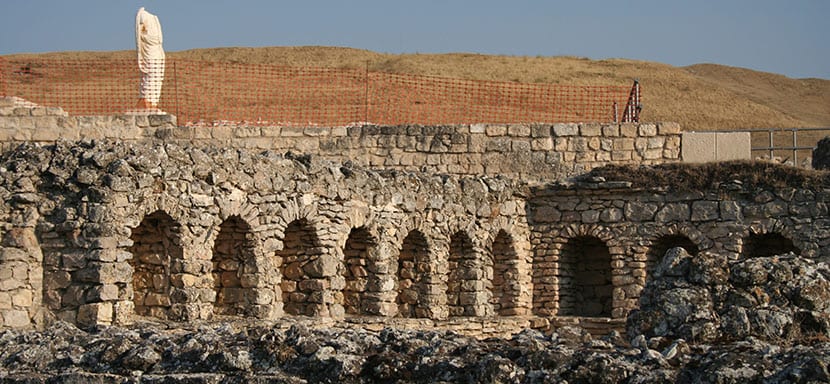
For the accurate understanding of the ruins there is an Interpretation Center that it is a building well integrated into the landscape and that looks like a typical Roman house. It indisputably complements the visit to the archaeological park to understand, interpret and historically locate the ruins. It has a permanent exhibition and an audiovisual projection room. In the lobby the origin and history of the city is presented and in the Museum Room you will see the most interesting of society, the mine, monuments and everyday life.
You must calculate an average of between two to four hours to visit the park. If you go alone, the tour is guided by the paved roads that circulate between the ruins. There are also group visits but you must reserve and the groups are of maximum 15 people. If you like the Hiking A circuit of paths has been created around the park to be able to enjoy the area.
What to see in the Segóbriga Archaeological Park
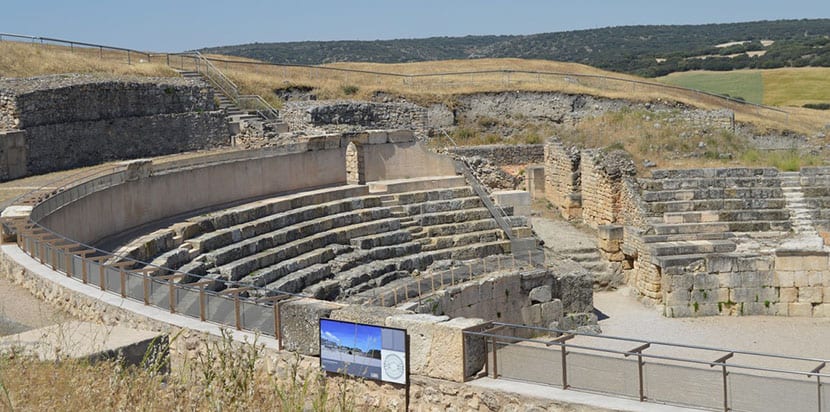
Basically the best of the ruins of this ancient city are concentrated in the Amphitheater, the Circus, the Theater, the Visigoth Basilica, the Wall and the Main Gate, the House of the Mining Attorney, the Forum, the Thermal Baths of the Theater and Gymnasium, the Basilica, the Cryptoportico of the Forum and the Curia, the Acropolis, the Aqueduct, the Necropolis, the Monumental Baths and the Basilical Hall.
- Amphitheater: it was at the entrance of the city together with the Theater, one on each side. It is elliptical in shape and 75 meters long. Its capacity was 5 spectators. Between the stands and the arena there is a high podium, a covered corridor that connected the doors and allowed the internal connection to move people and beasts.
- Theater: it is small but very well preserved. It is estimated that its construction was completed in the time of Claudius or Nerón but it was inaugurated around 79 AD The steps are divided into three parts linked by stairs and separated according to social class.
- Forum: It is a rectangular square on the main street of the city, with a portico around it with huge columns. This political and social center of the city dates back to 15 BC
- Monumental Baths: They were built in the XNUMXst century AD and were the place for exercise, hygiene and business. Pallestra, swimming pool, changing room, frigidarium, tepidarium, caldarium and a dry sauna, everything was concentrated here.
- Aqueduct: It supplied the city with water and was later distributed through various cisterns located here and there on the hill. It was made of concrete and had inside a lead tube through which the water circulated.
- Thermal baths of the Theater and Gymnasium: they are hot springs from the time of Augustus that were inspired by Greek gymnasiums and aimed at youth. You will see a dry sauna, one with a pool and the changing room area with its lockers.
- The wall: It was 1300 meters high and was built in the time of Augustus. It had several doors.
These are some of the Roman buildings that you will see on your tour but also in the archaeological park there are other ruins that do not belong to Roman times, such as the Visigoth Basilica, which was nothing more and nothing less than the first excavated building from the set of ruins. It has three naves, separated by 10 columns and a crypt.
As you can see, the park is an interesting set of ruins and if the day of the visit is pleasant you can even walk around and enjoy the landscape.